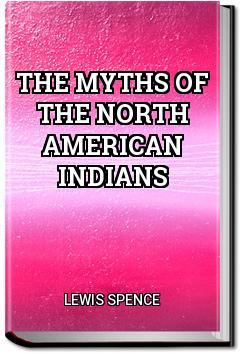UNLIMITED Audiobooks and eBooks
Over 40,000 books & works on all major devices
Get ALL YOU CAN for FREE for 30 days!
The Myths of the North American Indians
Lewis Spence
How does All You Can Books work?
All You Can Books gives you UNLIMITED access to over 40,000 Audiobooks, eBooks, and Foreign Language courses. Download as many audiobooks, ebooks, language audio courses, and language e-workbooks as you want during the FREE trial and it's all yours to keep even if you cancel during the FREE trial. The service works on any major device including computers, smartphones, music players, e-readers, and tablets. You can try the service for FREE for 30 days then it's just $19.99 per month after that. So for the price everyone else charges for just 1 book, we offer you UNLIMITED audio books, e-books and language courses to download and enjoy as you please. No restrictions.
Try now for FREE!

"Love your service - thanks so much for what you do!"
- Customer Cathryn Mazer
"I did not realize that you would have so many audio books I would enjoy"
- Customer Sharon Morrison
"For all my fellow Audio Book & E-Book regulars:
This is about as close to nirvana as I have found!"
- Twitter post from @bobbyekat



Community Reviews
Its an enjoyable book on America Indian mythology
The people who knock this for being racist clearly have no concept of the idea that people used different words in the past. On multiple occasions the author specifically pleads on behalf of American Indians that the white man acknowledge their skill, intellect, and uniqueness (yes he refers to peop
Interesting. I enjoyed it. People who are claiming it is racist will also find plain oatmeal to be wild and offensive. Grow skin thicker than tissue paper and you will find some great American Indian myths.
Comments claiming this book was “too racist to stomach” were assuredly written by double-standard liberals who hate the British Empire’s naval expansion period, and if I were to guess, such commentators assuredly hate and despise early European academia also. No matter how illuminating the content i
This book is very in-depth where research is concerned. Everything is covered about North American Indians which I loved. If you are interested in History this book's for you.
Something to keep in mind when you pick this book up is the fact that it was written in 1914. That means it is racist as all get out. The really annoying thing about this book is that the guy writing it thinks he, himself, and his contemporary researches into Native American cultures are not racist
I didn't like the use of the racial slur of "Red Man" throughout the first two chapters. Spence used "aboriginies" a few times and other less offensive terms but I abhor racism; and the term (along with 'redskin'; stressed 'redskin' not used in this book) was used as a slur at least by the 1850s. Th
The "Peace Queen," "Ten Brothers," and "The Legend of Poia (Scarface)," are just a few of an amazing collection of myriad myths and lore loosely organized by region. Myths range from [East of the Mississippi] The Muskogean Race (including 4 of the 5 "C's" (Choctaw, Chippewa....) to the Story of Poca